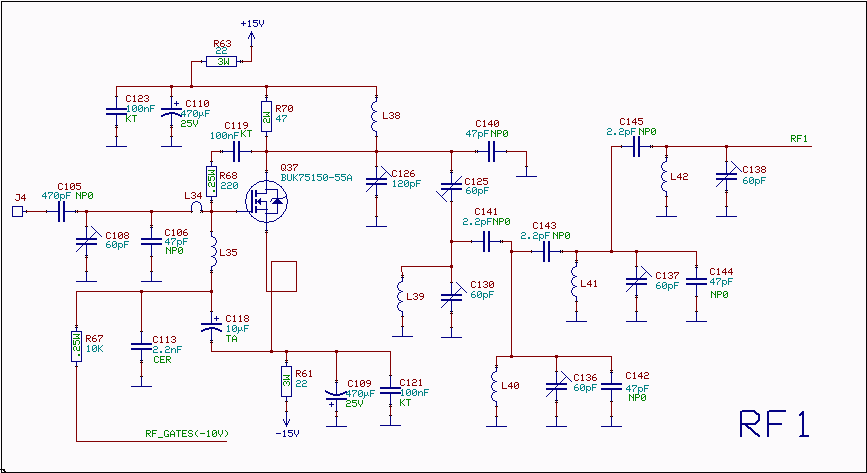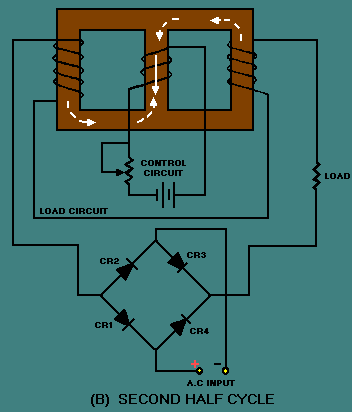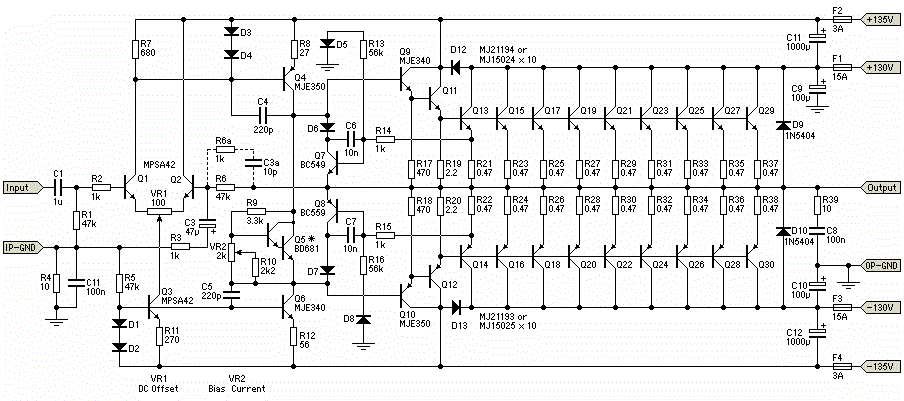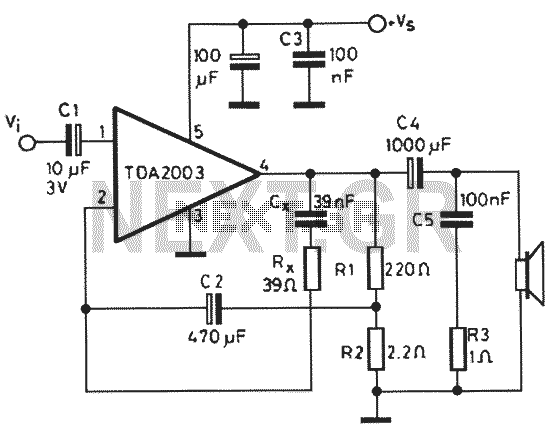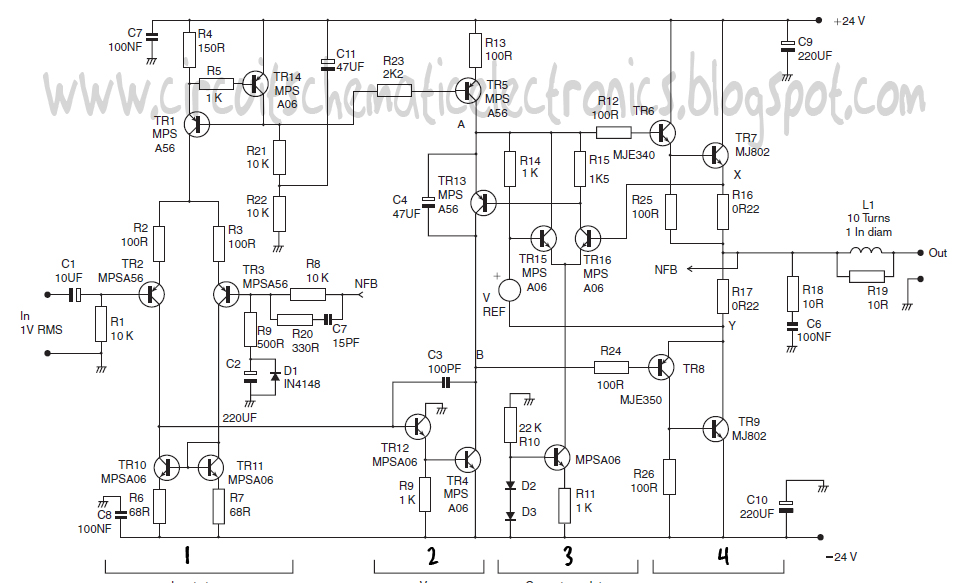
22 Watt Stereo Amplifier
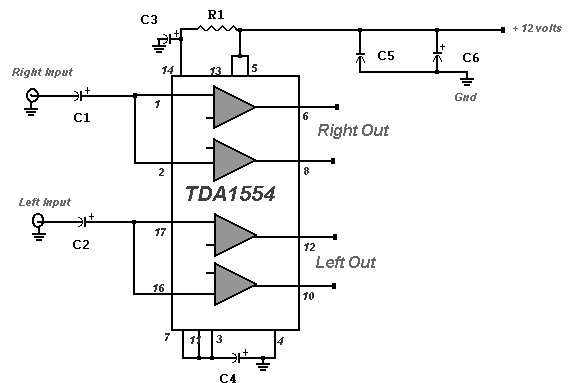
A 22 Watt stereo amplifier circuit diagram is presented. This circuit can be utilized for audio home amplifiers as well as car audio amplifiers. It features a straightforward design, is cost-effective, and is very easy to assemble, making it accessible even for novice hobbyists. The schematic provided is specifically for a car stereo amplifier that can be used in vehicles. The circuit is based on the TDA1553, which operates as a Class-B audio amplifier. The design is simple, consisting primarily of the integrated circuit and a capacitor. The circuit diagram illustrates a car stereo amplifier that delivers up to 20 watts of power, enabling users to enhance the output power from their car stereo system to a maximum of 20 watts. The input is connected to the output of the receiver, while the output is connected to the speaker as depicted in the car audio amplifier schematic. It is crucial to ensure that the speaker is not connected to the chassis (ground); otherwise, the integrated circuit, IC1, a TDA2004, may be compromised.
The 22 Watt stereo amplifier circuit employs the TDA1553 integrated circuit, which is designed for high-efficiency audio amplification. The TDA1553 is a Class-B amplifier, known for its ability to deliver quality sound output while minimizing distortion. The circuit typically includes a few passive components such as capacitors and resistors, which are essential for filtering and stability.
In the schematic, the input stage is connected to the audio source, such as a car stereo receiver. The amplifier's output is directly linked to the speakers, ensuring that the audio signal is amplified effectively. The circuit design should include decoupling capacitors to filter out any noise from the power supply, thereby enhancing the overall audio quality.
The use of the TDA2004 in conjunction with the TDA1553 allows for a robust amplification stage, capable of handling the demands of car audio systems. The TDA2004 serves as a secondary amplifier stage, providing additional power handling and output capabilities. It is important to incorporate proper heat dissipation methods, such as heatsinks, to prevent thermal overload during operation.
When assembling the circuit, attention must be paid to the orientation of the components and the connections to avoid short circuits. Additionally, ensuring that the speaker is isolated from the chassis ground is critical to prevent potential damage to the integrated circuits. This amplifier circuit is ideal for those seeking an affordable and efficient solution for enhancing audio performance in vehicles or home audio systems.22 Watt Stereo Amplifier circuit diagram. This circuit can be used for audio home amplifier and car audio amplifiers. It is extremely simple design, inexpensive and very easy to build. Even a newbie hobbyst will easy assemble this circuit. The scheme given here is a car stereo amplifier circuit can be used in That car or other vehicle. The circuit is basedTDA1553, which is aClass-Baudioamplifier. As you can see this circuitisverysimple, consisting onlyof theICand thecapacitor6. Here is a circuit diagram of car stereo. This 20w car audio amplifier circuit described hereoffers a20 wattboosterthatwillallow youtorealize thepower amplifierwith which one canincrease the poweroutputfromthe carstereoup to20Wattsmaximum. The inputINis connected to theoutputof thereceiver, Uoutputis connectedto the speakeras shownoncaraudioamplifierscheme.
It is veryimportanttoensurethat thespeakerhas no connection tothe chassis(ground)ifnot, the integrated circuitIC1, aTDA2004will. 🔗 External reference
The 22 Watt stereo amplifier circuit employs the TDA1553 integrated circuit, which is designed for high-efficiency audio amplification. The TDA1553 is a Class-B amplifier, known for its ability to deliver quality sound output while minimizing distortion. The circuit typically includes a few passive components such as capacitors and resistors, which are essential for filtering and stability.
In the schematic, the input stage is connected to the audio source, such as a car stereo receiver. The amplifier's output is directly linked to the speakers, ensuring that the audio signal is amplified effectively. The circuit design should include decoupling capacitors to filter out any noise from the power supply, thereby enhancing the overall audio quality.
The use of the TDA2004 in conjunction with the TDA1553 allows for a robust amplification stage, capable of handling the demands of car audio systems. The TDA2004 serves as a secondary amplifier stage, providing additional power handling and output capabilities. It is important to incorporate proper heat dissipation methods, such as heatsinks, to prevent thermal overload during operation.
When assembling the circuit, attention must be paid to the orientation of the components and the connections to avoid short circuits. Additionally, ensuring that the speaker is isolated from the chassis ground is critical to prevent potential damage to the integrated circuits. This amplifier circuit is ideal for those seeking an affordable and efficient solution for enhancing audio performance in vehicles or home audio systems.22 Watt Stereo Amplifier circuit diagram. This circuit can be used for audio home amplifier and car audio amplifiers. It is extremely simple design, inexpensive and very easy to build. Even a newbie hobbyst will easy assemble this circuit. The scheme given here is a car stereo amplifier circuit can be used in That car or other vehicle. The circuit is basedTDA1553, which is aClass-Baudioamplifier. As you can see this circuitisverysimple, consisting onlyof theICand thecapacitor6. Here is a circuit diagram of car stereo. This 20w car audio amplifier circuit described hereoffers a20 wattboosterthatwillallow youtorealize thepower amplifierwith which one canincrease the poweroutputfromthe carstereoup to20Wattsmaximum. The inputINis connected to theoutputof thereceiver, Uoutputis connectedto the speakeras shownoncaraudioamplifierscheme.
It is veryimportanttoensurethat thespeakerhas no connection tothe chassis(ground)ifnot, the integrated circuitIC1, aTDA2004will. 🔗 External reference

